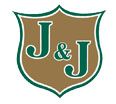The insect pests commonly known as ambrosia beetles are exceptionally small organisms that excavate tunnels within firewood, lumber, trees and other woody plants. These pests mainly target trees that are dead or dying, but many species bore into healthy trees and woody ornamental plants, killing them. Ambrosia beetles bore into trees in order to cultivate and farm fungal organisms that they rely on as their primary food source. The tree and plant species that these beetles select as their hosts varies from species-to-species.
Ambrosia beetles are most problematic in the southeast where the high relative humidity is required to induce fungal growth in trees. As destructive plant pests, native ambrosia beetles are not nearly as aggressive as the 45 non-native species that have become established in the country, five of which are considered serious pests. The granulate ambrosia beetle (Xylosandrus crassiusculus) is the most destructive pest of its kind in the southeast, but the most recently introduced exotic ambrosia beetle pest, the camphor shoot borer (Cnestus mutilatus), inflicts significant damage to gas tanks, fuel lines, and gas storage containers, sometimes resulting in the destruction of vehicle engines.
The camphor shoot borer (CSB) was first discovered in the US in either 1999 or 2004 when specimens were recovered from infested trees in Mississippi. Not long afterward, these pests were found in Louisiana, and they are currently expanding their habitat range in the country at an unusually rapid pace. While adult CSBs are only between 2.5 and 4 mm in length, they are the largest of all of North America’s ambrosia beetle species. In the southeast, these beetles are most active between March and September, with peak activity occurring during the spring and early summer.
In order to locate tree hosts that can produce fungi, CSBs possess specialized sensory organs that allow them to detect ethanol produced by fermenting wood. However, since standard gasoline fuel contains 10 percent alcohol, these beetle pests mistake any container holding gasoline for fermenting wood. Because of this, CSBs have been found boring holes into gasoline containers, fuel lines, and especially, gasoline tanks on lawnmowers.
Two years ago, a group of sea faring scientists wound up stranded far from the Gulf Coast due to a fuel leak caused by CSBs boring into the boat’s fuel line. Hundreds of CSB specimens frequently inflict extensive damage to gas containers stored in sheds, resulting in ecologically harmful leaks, and pest control professionals often address CSB damage to riding lawn mowers. When CSB damage to gas tanks and gas containers was first discovered in the US, entomologists were perplexed and fascinated. Today, the first object known to have sustained damage from these CSBs in the US is a gas container that can now be seen in the Louisiana State Insect Museum.
Have you encountered any form of damage inflicted by CSBs?
Tags: Ambrosia Beetle



